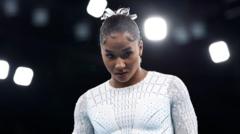Young Americans are taking a leading role on sustainable fashion, with their concerns over the environment driving a new wave in clothing.
Experts say young people are asking all the right questions when it comes to being a conscientious clothing consumer in an industry that struggles with sustainability.
“Teenagers are at the forefront of the sustainable fashion movement. They are highly influenced by social media and are more aware of environmental issues than older generations,” said Amrut Sadachar, associate professor of apparel merchandising at Auburn University.
“This awareness translates into their fashion choices, with many opting for sustainable fashion brands, thrifting, renting, reselling, upcycling and DIY fashion projects,” Sadachar added.
The sustainable fashion movement began decades ago in the 1970s, but young consumers are bringing new light to the movement with renewed calls for transparency, an uptick in thrifting and innovation in sustainable materials.
“I want to say that I'm very impressed with the new teenagers that are asking questions about how things are being made, and that's the first step to comprehend the problem that we have,” said Juan Hinestroza, professor of fiber science and apparel design and interim chair of Human Centered Design at Cornell University.
And the fashion industry has a big problem when it comes to the environment.
In 2020, the World Economic Forum reported the fashion industry produces 10 percent of all humanity’s carbon emissions and is the second largest consumer of the water supply around the world, after agriculture.
“By some accounts, the clothing industry, which is a global industry, is the second-greatest polluter and contributor to climate change behind fossil fuels. It is basically ... there's absolutely nothing that we currently do that does not affect the climate or often hurt people overseas,” said Noël Palomo-Lovinski, professor at the School of Fashion at Kent State University.
But while young people are more environmentally conscious, sustainable fashion can be a difficult lesson for those in high school and younger.
“I think young people want to dive in and want to know what they can do better, but it's really hard for them to find good answers and get good advice,” said Lisa Hayes, associate professor of fashion design at Drexel University.
And the basic tenets of sustainability can be difficult in an age bracket that is often still outgrowing the clothing they buy.
School and sports uniforms “have a very limited lifetime, and what happens to them after they are being disposed is something that should worry everybody,” Hinestroza said.
There are some companies that are looking to break into the space of sustainable apparel for schools, such as Kapes Uniforms, which emphasizes green practices in creating school uniforms.
“I don't know if schools are incorporating this, but there are companies that are trying to make more environmentally friendly uniforms,” said Kathryn Reiley, faculty lecturer of apparel design and retail at the University of Minnesota.
“And then also a lot of private schools, what they'll do is, if your child has grown out of their uniform clothing, you can give it to the school, and they'll kind of have like a clothing swap or a sale, and then people can come and buy whatever size fits their child,” she added.
But creating more sustainable fashion broadly is a difficult challenge in a world where the more you create, the more you make.
“Especially for designers, this is an area that we can change the world is designing for those outgrowing [clothes] so maybe making clothes more modular, or with some space to allow for the natural growth of people, so without having to buy a new one,” Hinestroza said. “But it's not that simple. It's not simple because the economics don't work in that direction.”
But new opportunities for young people are available such as clothing exchanges done at schools or churches or online platforms such as Nuuly that lets people rent clothes.
Young people will also go on Instagram and show off their vintage finds at thrift stores and other small sustainable clothing companies.
“That also keeps all those clothing items out of the landfill for a much longer period of time. So I think young people are really aware of that and are embracing that better than older people, better than older consumers,” said Hayes.
And there is an opportunity for schools to help middle and high schoolers learn and embrace sustainable fashion.
“I think it would be a great topic to share earlier, because the sooner young people start asking questions, the sooner industries and government and everybody else has to start coming up with an answer,” Hayes said.















 English (US) ·
English (US) ·